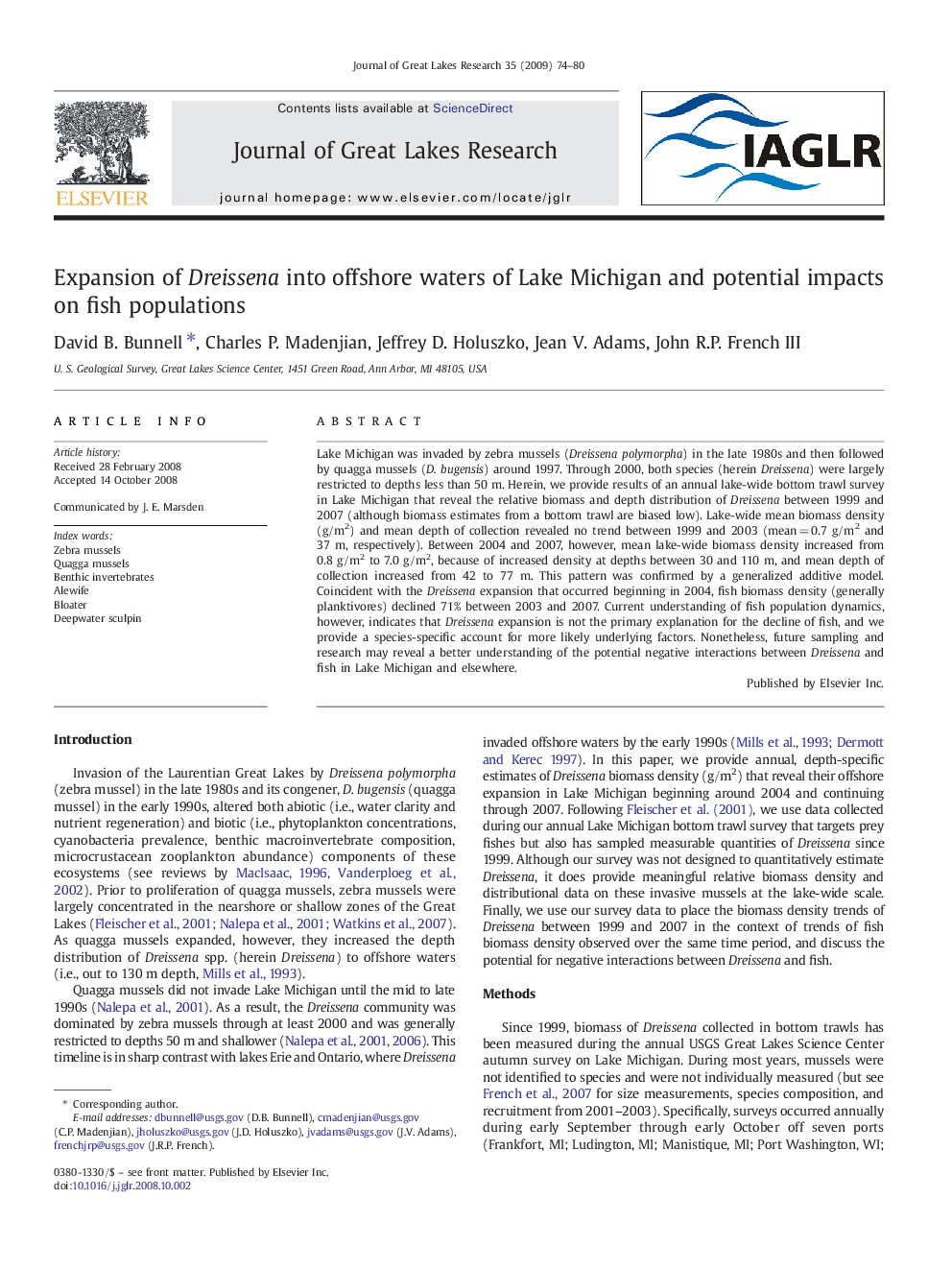| Article ID | Journal | Published Year | Pages | File Type |
|---|---|---|---|---|
| 4399249 | Journal of Great Lakes Research | 2009 | 7 Pages |
Lake Michigan was invaded by zebra mussels (Dreissena polymorpha) in the late 1980s and then followed by quagga mussels (D. bugensis) around 1997. Through 2000, both species (herein Dreissena) were largely restricted to depths less than 50 m. Herein, we provide results of an annual lake-wide bottom trawl survey in Lake Michigan that reveal the relative biomass and depth distribution of Dreissena between 1999 and 2007 (although biomass estimates from a bottom trawl are biased low). Lake-wide mean biomass density (g/m2) and mean depth of collection revealed no trend between 1999 and 2003 (mean = 0.7 g/m2 and 37 m, respectively). Between 2004 and 2007, however, mean lake-wide biomass density increased from 0.8 g/m2 to 7.0 g/m2, because of increased density at depths between 30 and 110 m, and mean depth of collection increased from 42 to 77 m. This pattern was confirmed by a generalized additive model. Coincident with the Dreissena expansion that occurred beginning in 2004, fish biomass density (generally planktivores) declined 71% between 2003 and 2007. Current understanding of fish population dynamics, however, indicates that Dreissena expansion is not the primary explanation for the decline of fish, and we provide a species-specific account for more likely underlying factors. Nonetheless, future sampling and research may reveal a better understanding of the potential negative interactions between Dreissena and fish in Lake Michigan and elsewhere.
